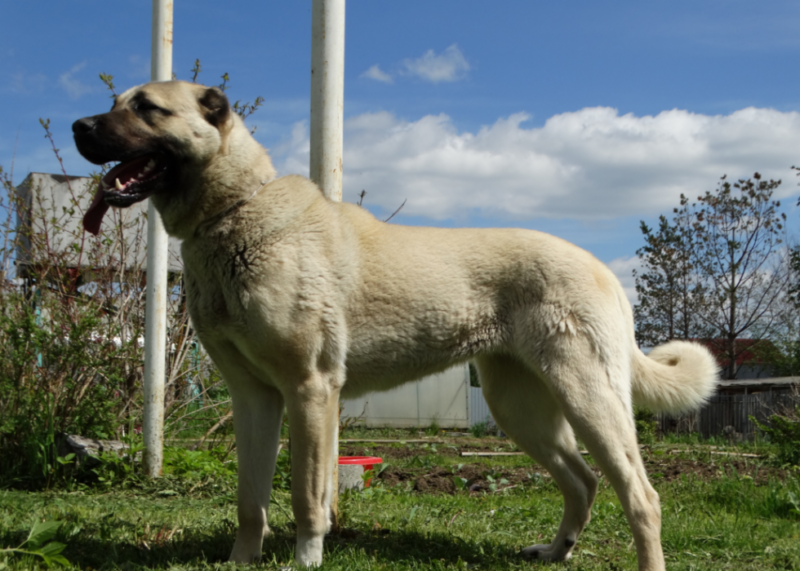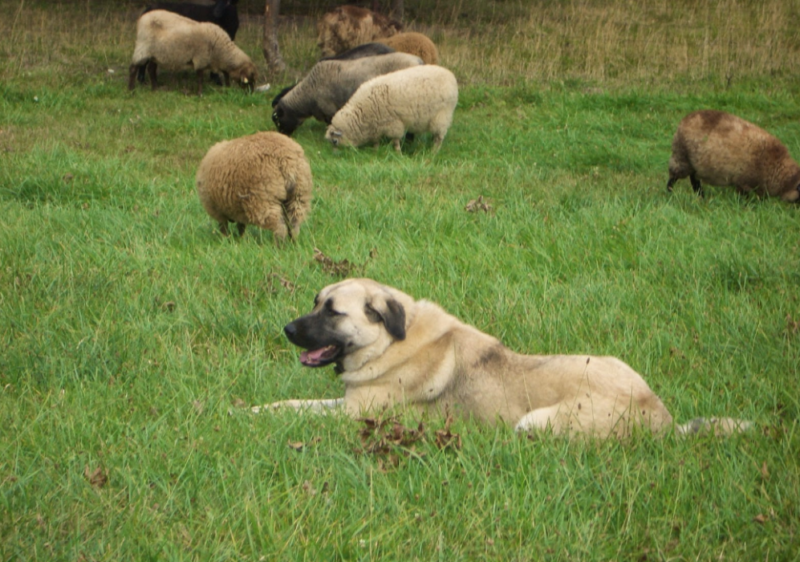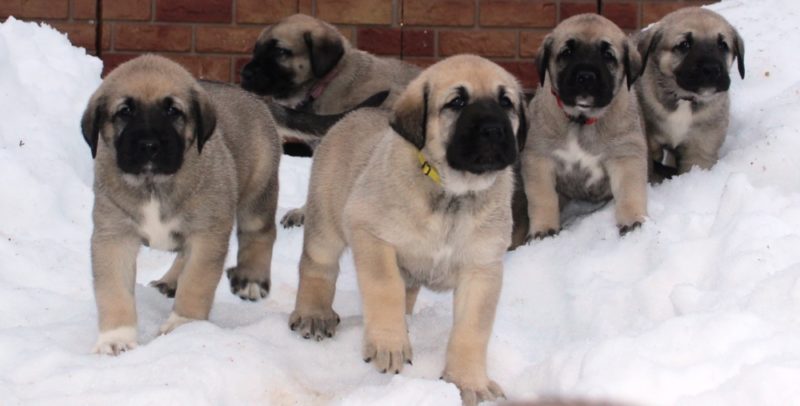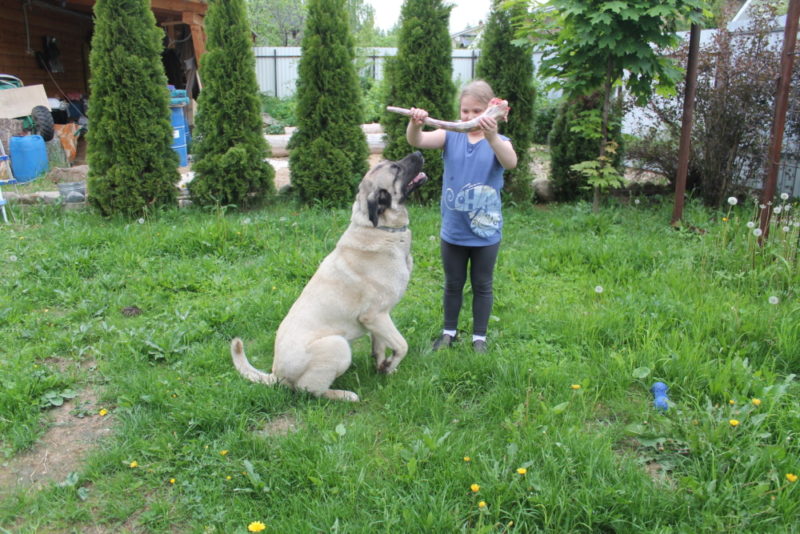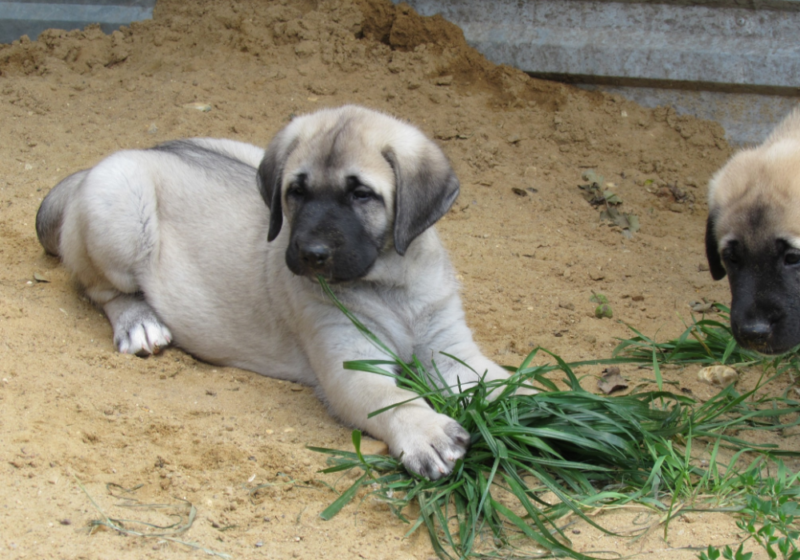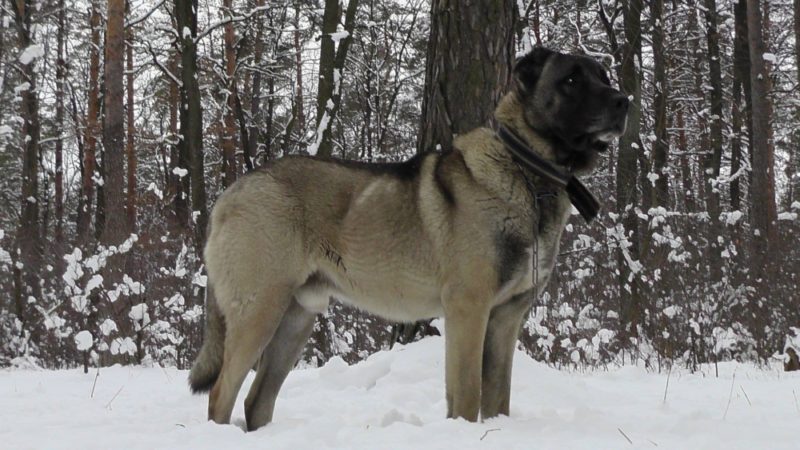Among admirers of large dogs, the Anatolian Shepherd is especially popular. This incredibly strong and hardy animal is an excellent bodyguard and watchman. How to properly care for such a large pet is described below.
Material Content:
Breed description
Anatolian Karabash is a large dog, distinguished by strength and courage, able to successfully work both in a group and individually.
These magnificent four-legged creatures emerge victorious from battles with wolves and other predators wandering into their territory.
Representatives of the breed can be called giants. Their weight ranges from 50-60 kg, the height at the withers can be 70-80 cm.
Note. The designated breed is considered quite young, because its standards were established in 1990. All varieties of these tetrapods were united by the name "Anatolian Shepherd."
Origin history
The history of this relatively young breed is actually rooted in antiquity. Anatolian or Kangal, descended from Molossian dogs, the very ones that are considered the ancestors of most service dog breeds. For many millennia, Molossoid mutated, developed and became the founders of many modern four-legged breeds. Nevertheless, the Anatolian Shepherd almost did not change over time.
There is a hypothesis that the Anatolian Shepherd Dogs and Greyhounds applied a “paw” to the appearance of the breed.And although this theory is not confirmed, it largely explains the impressive dimensions of the Kangals.
Anatolian shepherds have long been considered a shepherd breed of dogs, but these animals did not graze livestock, but were engaged in its protection. As a rule, dogs worked in groups and at the sight of a potential threat, for example, a wolf, moved towards the enemy, stretching out in width. As a rule, this attack occurred in silence, not accompanied by a bark and a roar.
Did you know? Anatolian Karabash is one of the varieties of dogs that make up the group called the Anatolian Shepherd. In Turkey, considered the birthplace of animals, the term "Anatolian Shepherd" does not apply.
Turkish breeders divide dogs into specific subspecies:
- Karabash (translated from Turkish - "black head"). This animal is just a dog, called the Anatolian Shepherd in Europe.
- Kangal (Kangal Karabash). Representative of one of the oldest breeds of Turkish dogs. It is these animals that are used to breed the Anatolian Shepherd.
- Turkish Akbash (in translation - "white-headed"). Large service dog.
- Malacle - large dogs used for guard and shepherd activities. These animals are also called Turkish mastiff.
In other words, the breed Anatolian Shepherd, despite its Turkish roots, is purely European. And all because purebred kangals are a national Turkish heritage, it is forbidden to export them from the country. Taboo, however, was not imposed on the mestizos of this breed. In addition, the official ban did not prevent the Kangals and their descendants from reaching Europe. Here they were crossed with other breeds. At European shows, a purebred kangal brought from Turkey is registered as an Anatolian shepherd.
Did you know? Anatolian shepherds owe their name to the area of origin. The Anatolian Plateau located in Turkey includes plains with a length of about 700 km.
The nature and behavior of the Anatolian Shepherd Dog
The nature of the Anatolian dog is unpretentious, these creatures are distinguished by excellent performance. Performing his task, the kangal will spare no efforts, and sometimes his own life.
There are legends about the endurance of Karabash among shepherds. These dogs that have fended off flocks of sheep are able to guard for days, limiting themselves to food and drink.
A well-bred shepherd is devoted to the owner, loves children. He treats adults with restraint, and may not let strangers into his territory at all.
Breed standard and puppy selection
Before purchasing a Anatolian Shepherd puppy, it is recommended to take into account the requirements for the appearance of the animal according to the standard:
- The head is large and wide, proportional to the body. The transition from the bridge of the nose to the forehead is smooth.
- Scissor bite, strong teeth.
- Almond-shaped eyes. The eyelids are surrounded by dark brown or black eyeliner.
- The nose is dense, dark in color.
- Ears are triangular in shape, tight to the head.
- The wide neck smoothly passes into a slightly rounded back.
- The chest is wide, with elongated rounded ribs.
- The body is strong, muscular.
- Massive straight legs are equipped with flexible, strong joints.
- The tail is set high, lowered in a calm position, and raised in the worker.
The coat of Anatolian shepherds is intended to protect them both in the summer heat and in severe frosts. The dense undercoat is similar in structure to felt. Basic hairs of medium hardness. Their length varies depending on the season and climatic features - may be short or medium. Wavy hair is considered a marriage.
As for the color of animals, the classic color is the dark mask of the muzzle and the pied or reddish color of the rest of the body.
And although the breed is not common, you can purchase Anatolian Karabash in Russia in several special nurseries. You should not risk buying an animal from a random breeder.Otherwise, the potential owner can not be sure of the cleanliness and health of the pet, as well as its mental stability. If the puppy to be chosen should subsequently become the winner of the shows, special attention should be paid to its appearance and compliance with the standard. The cost of a puppy of Anatolian Karabash ranges from 10,000-35,000 rubles. However, babies born to parents by champions can be more expensive.
Features of keeping a dog
Anatolians are unpretentious in leaving, however, are in dire need of territory for walking and protection. The owner should remember that the nature of the pet depends on the frequency of physical activity. The kangal dog is not intended for living in an apartment.
Note. The shepherd living in the yard must be equipped with a warm booth.
However, providing the pet with housing, the owners often encounter the fact that he refuses to move into it. Perhaps the kangan instinctively wants to take a place higher. Thus, during the installation of the booth, you can raise it above the ground by adjusting the legs to the house.
Care, health, feeding
The coat of the Anatolian does not need special care, however, the shedding dog should certainly be combed out. It is often not necessary to bathe an animal - once a year is enough. In general, the karabash is quite hardy and healthy, therefore it is enough to carry out systematic examinations at the veterinarian without resorting to additional manipulations.
The bite and teeth of the pet require close attention. They should always be kept clean. Claws are also an important detail on a dog’s exterior. By periodically cutting them, the owner takes care of the appearance and comfort of his pet.
Anatolians do not belong to the gourmet breed and enjoy eating what their owner treats, whether it is dry food or natural food. Due to the size of the dog, the owner must be prepared to feed the pet abundantly. Ready food should be selected marked "For large dog breeds." As for natural food, the Anatolian will like meat (beef, chicken, turkey). You can diversify the diet with cereals (buckwheat, rice, millet), as well as vegetables and fruits. Modern dogs need special nutrition and vitamins. This is especially true for young animals in the growth phase.
Parenting and training
Although Anatolians are smart and self-sufficient dogs with a complaisant disposition, they reveal all their best qualities only to a strong owner.
The process of socialization and animal training should begin at an early age. The owner must be clearly aware that the puppy can subsequently turn into a creature that can easily destroy a dog or cat.
The hunting instinct is alien to these animals, and therefore they have no desire to pursue the victim.
However, these giants are prone to dominance. In an attempt to take a leadership position, the Anatolian can show aggression and stubbornness, this should be suppressed radically.
To train such a pet is quite difficult, because even puppies do not always take into account the requirements of the owner. The owner is best to play on the instinct of the dog to protect and guard. In an unfamiliar territory, the Anatolian usually shows all his positive qualities.
Karabash is a very smart animal, easy to remember teams. However, the dog is able to ignore them if he considers the task unreasonable. Even an experienced owner who has raised more than one German shepherd can be stumped by the kangal’s ability to make independent decisions.
Pros and Cons of Anatolian Karabash
The Anatolian is a dog that is not suitable for every owner; the young, active man with an imperious character will cope best with this animal. Before purchasing an animal of this breed, you should weigh the pros and cons.
Advantages of Anatolian Karabash:
- endurance;
- getting along with children;
- emotional stability;
- excellent watchdog qualities;
- reliability;
- high intelligence.
Cons Kangal:
- large sizes;
- difficulty in finding a purebred puppy;
- constant monitoring in the first few years of life;
- the need to live outside the city.
Anatolian Karabash is an impressive animal with the makings of an excellent guard. This giant needs a steady hand and regular exercise. This breed is absolutely not intended for lying aimlessly on the rug, then the Anatolian will become angry and aggressive.



